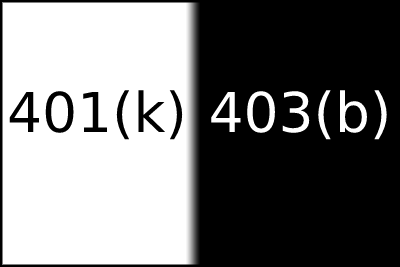Summary
Before implementing a new retirement plan, nonprofits should work with a retirement plan professional who can help the organization navigate these questions. Doing so will help the nonprofit determine if the 401(k) or 403(b) plan is right for them.
The above question is frequently asked by nonprofits when starting a retirement plan: should we adopt a 401(k) plan or a 403(b) plan? Often the answer is a 403(b) plan. But there are several factors that should be analyzed before choosing what plan will work best.
Will the plan pass the ADP test?
The key benefit of a 403(b) plan is that it gets a “free pass” on the Average Deferral Percentage (ADP) test. The ADP test limits the amount that a highly compensated employee (HCE) can defer based on the non-HCE staff’s average deferral rate. If non-HCEs do not defer at a high enough rate, then HCEs will need to have some of their deferrals returned, or the nonprofit will need to make contributions to the non-HCEs to avoid returning the HCEs’ deferrals.
For small non-profits, typically the only HCE will be the Executive Director, since a certain compensation threshold must be met. The Board will want to make sure that the ADP test will pass so this key individual can benefit from the retirement program.
The only way for a 401(k) plan to get a “free pass” on the ADP test is to elect safe harbor status which requires the nonprofit to make contributions to non-HCE staff.
Will the nonprofit make contributions to its employees?
The nonprofit can make contributions in a variety of ways. Note that contributions:
- can be discretionary, with the Board deciding yearly what contributions will be made to the plan participants, or
- can be a fixed commitment written into the plan document, and
- can be based on compensation and/or based on an employee’s deferral rate.
If the nonprofit commits to a contribution that will meet the 401(k) safe harbor status, then the ADP test advantage discussed above becomes moot.
If the nonprofit intends to make matching contributions (contributions based on employee deferral rates), both the 401(k) plan and 403(b) plan must pass the Average Contribution Percentage (ACP) test.
- Like the ADP test, the ACP test evaluates the level of matching contributions made to the HCEs as compared to the non-HCE staff.
- If there is low participation by the non-HCE staff, the ACP test may fail, and HCEs’ match contributions may need to be reduced.
- The only way to get a “free pass” on the ACP test for either type of plan, is to elect safe harbor status.
If the nonprofit commits to a contribution that will meet the match safe harbor requirements, then the ADP test advantage discussed above becomes moot, as safe harbor status will provide “free passes” for both the ADP and ACP tests.
Are there any investment or recordkeeping advantages?
At one time 403(b) plans were not allowed to invest in mutual funds; however, that investment restriction was removed many years ago, leveling the playing field between 401(k) and 403(b) plans. However, not all recordkeepers support 403(b) plans, so there are fewer recordkeeper options available when choosing a 403(b) plan. Although the 403(b) recordkeeper universe may not be as expansive as it is for 401(k) plans, it is still large enough that a nonprofit should have plenty of choices to find a solution that meets their needs and objectives.
Who is eligible for the plan?
The eligibility rules are vastly different for 403(b) and 401(k) plans. The 403(b) plan uses a universal eligibility rule which in essence allows all employees to start making deferrals as soon as they are hired. Very few exceptions can be made to limit this group. In a 401(k) plan, the nonprofit can set eligibility requirements based on a defined minimum age, a required employment period, and/or a minimum number of hours before an employee can make deferrals.
From our experience, most non-profits want to provide generous benefits to their employees, so the 403(b) universal eligibility rule is usually not a concern. However, if a nonprofit has high turnover, it should consider if the universal eligibility rule will create administrative burdens due to increased enrollments and distribution processing for short-term employees.
Will the eligibility rule impact the plan audit requirement?
For nonprofits that employ approximately 100 employees, the audit requirement should be examined under both types of plans. Once a retirement plan has 120 eligible plan participants, the plan must have annual plan audits performed as part of the Form 5500 filing requirement. With more liberal eligibility requirements in a 403(b) plan, the annual plan audit may be required sooner than if the nonprofit had adopted a 401(k) plan with a more stringent eligibility definition.
Plan audits are an additional plan expense that can be quite costly. Evaluating if an audit would be required under one plan and not the other could be a factor in a nonprofit’s decision. In the interest of reducing fees, avoiding the audit requirement makes sense. On the flipside, the audit process can catch operational errors that might otherwise go undetected for years and result in expensive corrective actions.


